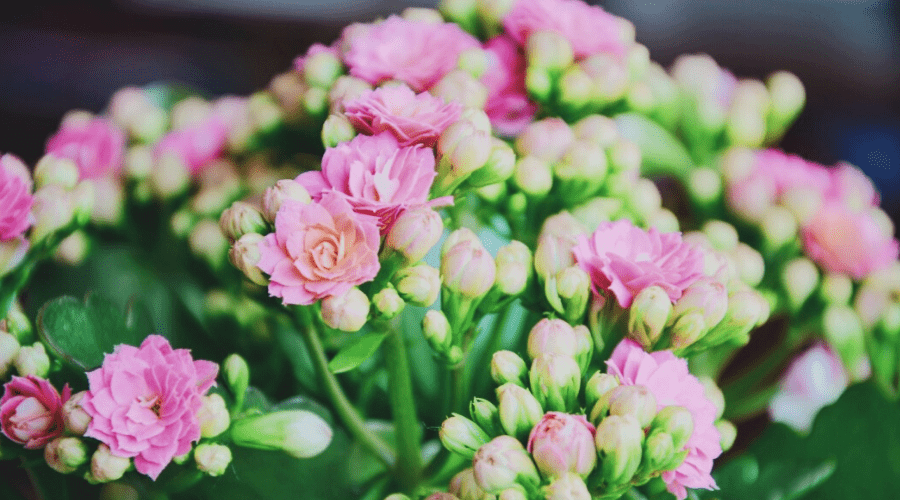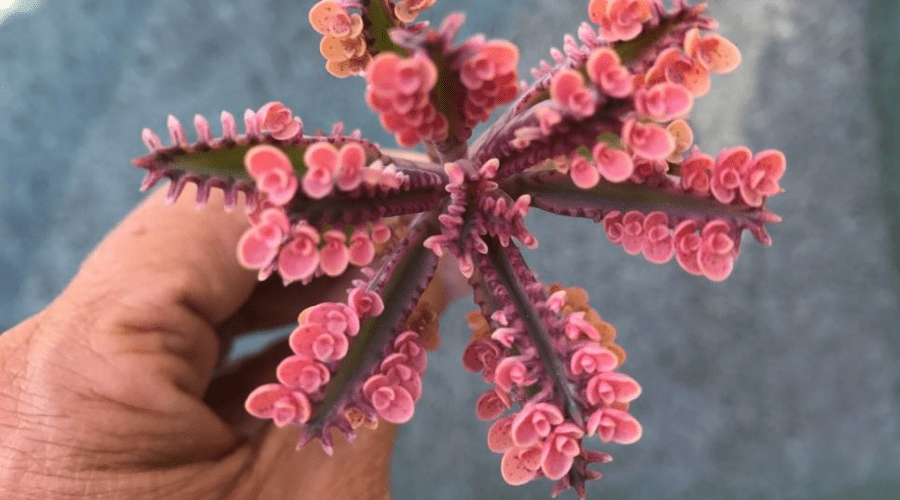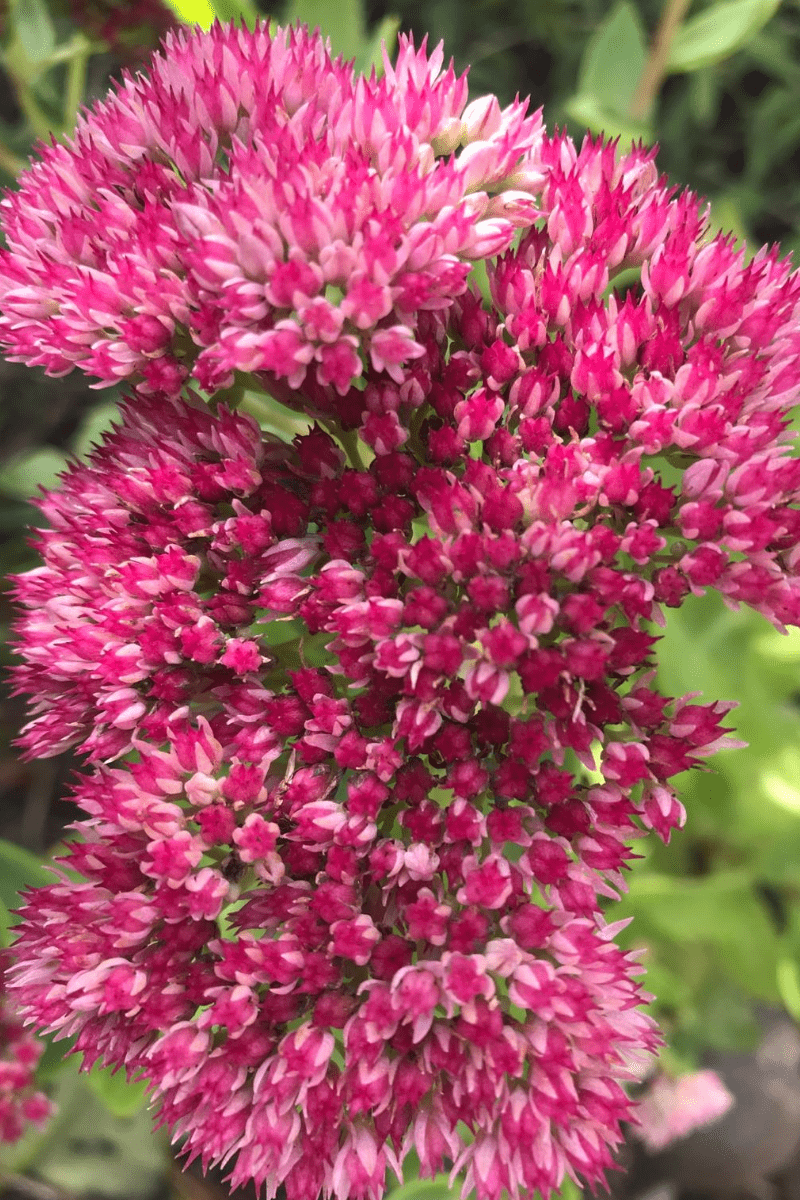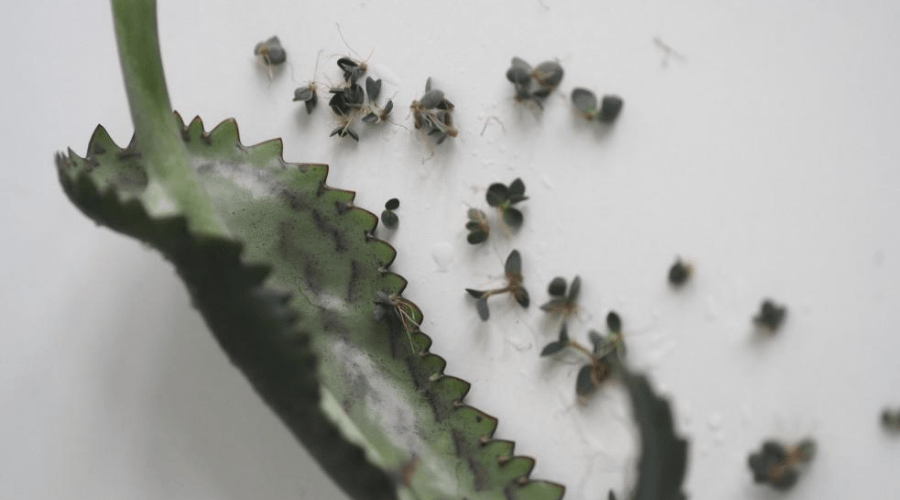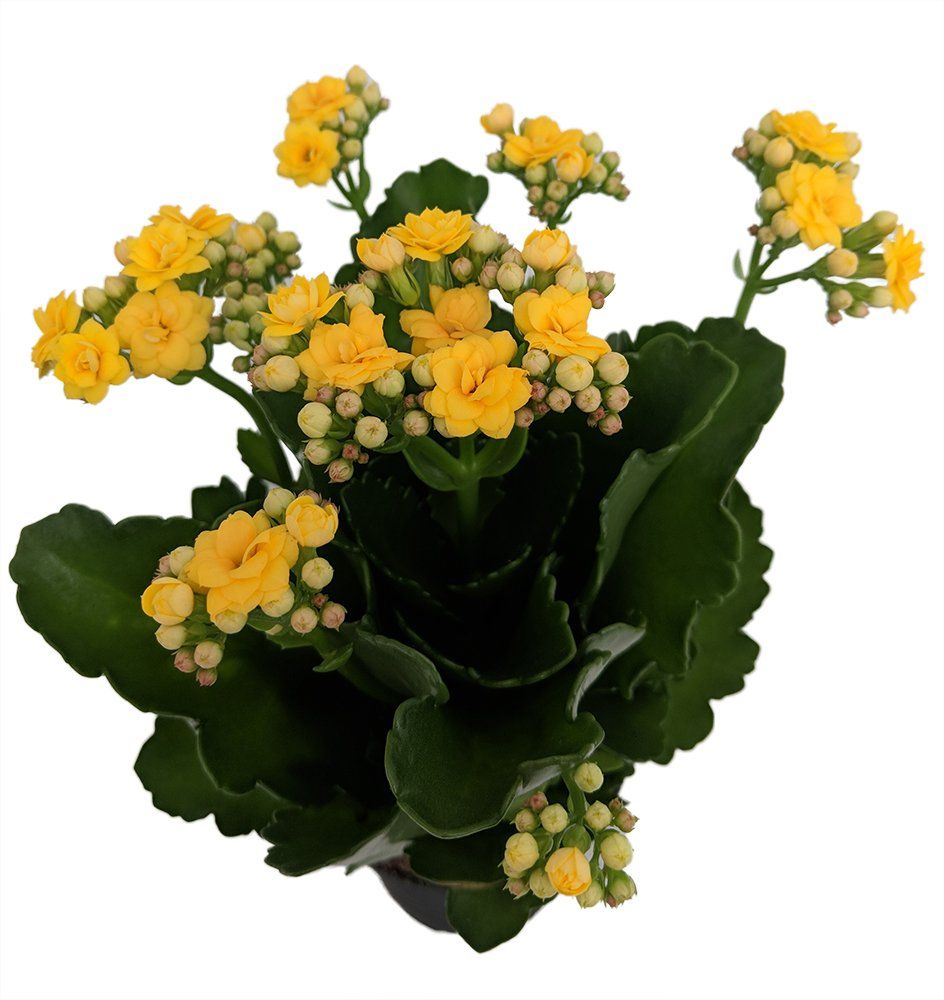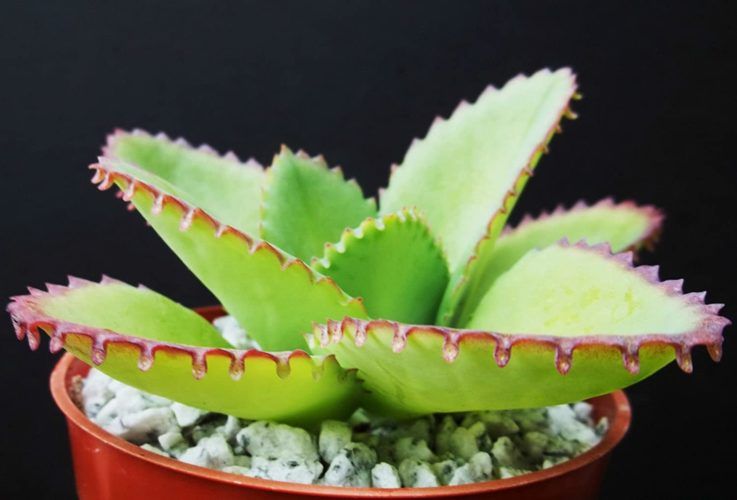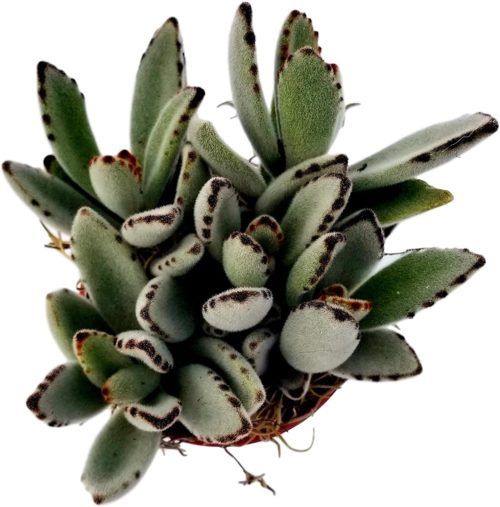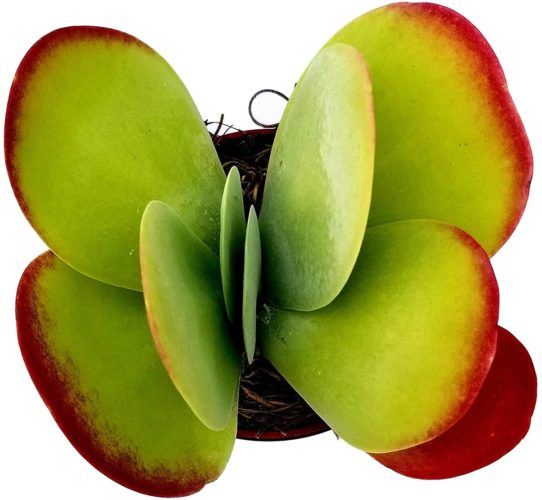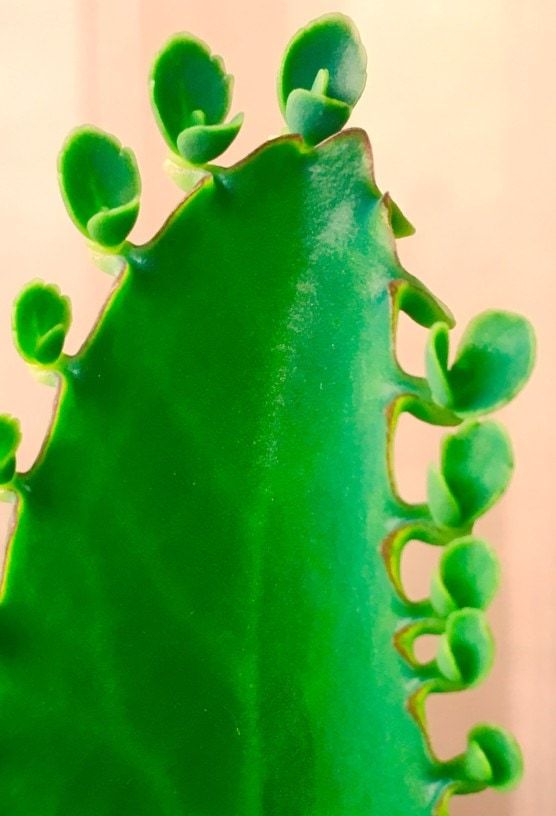If you are looking for a funky succulent, check out some kalanchoes! These crazy plants grow in otherworldly shapes, come in an array of colors, and sprout gorgeous, colorful blooms! They are perfect for people with brown thumbs because they require very little maintenance. In fact, they thrive on neglect. There are a couple of key kalanchoe care tips you must abide by, but don’t worry, we cover all of those in this guide on how to grow a kalanchoe plant.
Kalanchoe Details
Kalanchoe spp.
Ease of Care: Easy
Light: Bright Light
Water: Infrequent
Temperature: 60 F - 80 F
Height: < 3 Feet
Growth Rate: Slow
Pest: Pest-Resistant
Disease: Fungi and Powdery Mildew
Toxicity: Toxic to Pets
Kalanchoe Benefits
Seeing your funky, fuzzy kalanchoe every day will seriously boost your mood, but that isn’t the only benefit you will get from it. You can also apply kalanchoe tea to your skin to fight wrinkles. It will promote elasticity and the retention of moisture within your skin. If you have a backache, feet ache, or an ache anywhere else, you can ease your pain by heating kalanchoe leaves and pressing them on the affected part of your body.
Although there are claims that kalanchoe tea has shown effectiveness against cancerous tumors, there is not yet evidence to support its treatment as a cure. However, kalanchoe tea is nontoxic and high in electrolytes and minerals, so drink up if you like!
How to Make Kalanchoe Tea
This recipe uses leaves from the kalanchoe pinnate plant, although some of the other varieties, like mother of thousands, would work just as well.
Ingredients:
- 1 Cup of water
- 3 kalanchoe leaves
- Honey to taste
Instructions:
Combine the leaves and water in a pot. Cover the pot and bring it to a boil. Once it starts boiling, allow it to simmer for 3 minutes. Then, remove it from the heat allowing it to sit for 3 minutes. Strain the leaves from the tea and add honey to taste. Enjoy!
How to Care for a Kalanchoe Plant
Kalanchoe plants are extremely easy to care, being succulents and therefore capable of withstanding neglect. Still, there are some key kalanchoe care tips you should still keep in mind.
Light
Kalanchoes love bright light but levels that are too strong can burn the plant’s leaves. During the fall, winter, and spring you can place your kalanchoe in a spot with direct sunlight, like a south-facing window, but in the summer it should be somewhere with partial shade.
Water
During the fall, spring and summer, water your kalanchoe whenever the surface of its soil dries out. In the winter you can let almost the entire plant dry out before watering it. Whenever you water your kalanchoe you should water it deeply but don’t overdo it, the soil should be able to absorb all the water you give it.
Temperature
Kalanchoes can only be grown outdoors in USDA Plant Hardiness Zones 8 - 10 in the summer months, otherwise, you should keep them inside. Your plants love dry and hot climates and should never be exposed to temperatures below 50 F. If your home’s temperature is between 60 F - 85 F than it is perfect for kalanchoes.
Soil
Kalanchoes can thrive in normal, well-drained potting mixes. Mix in some peat moss, perlite, and sand to increase the chances of your kalanchoe flourishing. Kalanchoes do very well in small pots since they don’t grow to be very big. Make sure that the pot you use has excellent drainage.
Fertilizer
During the growing season feed your kalanchoe monthly with slow-release pellets or liquid fertilizer. Choose a nitrogen-based fertilizer for best results.
Pruning
To keep your kalanchoe healthy you will need to regularly prune it. Prune your plant to remove dead, dying, and damaged parts so that your plant can conserve energy for healthy growth. Deadhead kalanchoe plants after they flower to help with this and to also keep them looking visually appealing.
Prune your plants after they bloom to promote more blossoms and repeated flowering. It can take 2-3 weeks for new buds to produce after pruning. You can also prune your kalanchoe to shape it. Trim its branches by making decisive cuts where the plant forks. You can also clip off branches that have gone outside the confines of the shape you want for your plant.
Kalanchoes can easily multiply and spread, so pruning keeps them in check. Make sure that when you are pruning you are using clean, sharp pruners.
Kalanchoe Propagation
Kalanchoes are extremely easy plants to propagate from cuttings. Take a 3-inch section of the vegetative stem and cut off a couple of the leaves near the bottom. Place the cutting on a paper towel in a warm, dry location for a couple of days until the cut end callouses over.
Once it has dried, plant it cut-side down in a pot with moist peat moss and perlite, burying it up to its first leaf. Wrap a plastic bag around the pot, being careful not to touch the cutting with it. The bag will keep in the moisture and humidity aiding root growth.
Then, place the pot in a bright window with indirect light. It should take 2-4 weeks for your cutting to sprout roots at which point you can transplant it.
To propagate through plantlets, simply remove the tiny pups from the edges of the kalanchoe leaves and place them atop moist fertilized soil. Place the plantlets in their container in an area with good, bright light. They'll root and begin growing within a few weeks.
Forcing a Second Bloom
Of course, you love your kalanchoe the way it is, bloom or no bloom, but wow those blooms were pretty.
If you are interested in getting your plant to bloom twice a year then you have to trick it into thinking that winter just happened. Not through putting fake snow outside your window or throwing a fake Christmas, but through simulating a climate similar to winter.
Limit the light that your plant is exposed to, only allowing it to see a few hours of morning light before being shut away in a dim room or closet. After 6 weeks in which your plant is exposed to upwards of 12 hours of darkness a day, it will bloom with beautiful, vibrant flowers.
Of course, if the idea of shutting your plant away in the dark for most of the day is not appealing, you can just enjoy your kalanchoe’s striking foliage and wait for it to naturally bloom.
Kalanchoe Varieties
There are around 125 kalanchoe species, each one looking spectacularly bizarre in its own way. Below are 5 of the most popular, beautiful, and eye-catching kalanchoe varieties.
Kalanchoe Blossfeldiana
This is the most common kalanchoe variety producing brilliant blooms in a range of vivid colors including yellow, red, and pink. This plant will normally only reach 1.5 feet in height, which is fairly sizable for a kalanchoe house plant. It thrives on little water and full sun, but is a remarkably slow grower.
Cacti & Succulents' Yellow Kalanchoe
Kalanchoe plants grown in pots indoors require the same basic care as the outdoor plants. They grow best in clay pots for aeration and need drainage holes in the bottom. This one ships in a 4-inch grower pot and has yellow blooms.
Mother of Thousands
This funky variety produces rows of tiny plantlets along the rims of its succulent foliage. It can reach up to 3 feet in height and grows best in light shade with regular waterings. True to its quirkiness, it produces thin, violet, orange, and yellow multicolored flowers that are a sight to be seen. The only downside? The plant dies after producing them. If you tend to get attached to your house plants, don’t worry, it can take a long time for this variety to flower.
Exotic Cactus Shop Mother of Thousands
Cactus and succulents are pretty and very easy to grow! Just sun and a little water once a week. This Mother of Thousands ships bare root and ready for your own favorite planter or succulent garden.
Panda Plant
This popular succulent is absolutely adorable with chunky, fuzzy succulent leaves that have blotches of color on their edges. On some varieties, the fuzz is a yellow color while on others it’s a brown color. When these plants bloom they produce greenish-yellow flowers but blooming is rarer for them than other kalanchoe varieties. Panda plants love light shade and require little water so they are perfect for people who often forget to feed their plants.
Fat Plants San Diego Panda Plant
This gorgeous kalachoe panda plant comes with plenty of pups, ready to make new plants. This listing is for a fully rooted plant. If you live outside of California your plant will be shipped with our winter packaging.
Kalanchoe Thyrsiflora
Kalanchoe thyrsiflora is also known as a paddle plant because of the stacks of paddle-shaped leaves that it produces. Some also call this the “red pancake” plant because the leaves have a tendency to take on a reddish color in the winter. This plant grows to be only about 10 inches tall when planted in containers and thrives in bright light with infrequent waterings.
Fat Plants San Diego Kalanchoe Thyrsiflora
Fully rooted living succulent plant in a 4 inch industry standard plastic growers pot with soil. Colorful plants will fade due to being in a dark box for several days but should brighten back up with the correct lighting and care. Plants may arrive taller, shorter, wider, narrower, thicker or less thick based on health, availability, season and readiness.
Where to Buy a Kalanchoe Plant
When looking for a kalanchoe you can visit your local garden center or buy online.
One awesome online option is the Fat Plants San Diego shop on AMazon. They have multiple varieties of kalanchoe (linked above) and many other kinds of plants, as well.
Mountain Crest Gardens is a specialty plant shop that offers many varieties of kalanchoe in their online store, most of which are not available through Amazon or regular home garden shops like Lowe's.
FAQ: Kalanchoe Growing Questions
That was a lot of information. If you still have questions check out the next section with some of the most frequently asked kalanchoe growing questions.
What are Common Growing Problems With Kalanchoes?
Kalanchoe plants are largely drought-resistant and pest-resistant so you shouldn’t run into too many issues with those two things. Just keep in mind that because kalanchoes are drought-resistant it’s a good idea to always err on the side of underwatering because overwatering is more likely to cause problems. In the unlikely situation that your kalanchoe does attract pests, you can use neem oil to rub them off.
There are two diseases that kalanchoes are commonly be infected by: fungus and powdery mildew. If your plant is infected, use insecticidal soap or fungicide to get rid of them. If your plant’s leaves that were infected stop growing, remove them. You can prevent your plant from being infected with fungus by ensuring that it’s getting enough light and that there is proper air circulation around it.
Are Kalanchoes Poisonous?
Kalanchoes are not poisonous to humans but they are poisonous to pets. Do not let your cat, dog, or bird eat any of your kalanchoe and make sure to keep them somewhere that they can’t access. Kalanchoe contains toxic cardiac glycosides which are highly poisonous for animals. Pets who eat kalanchoe will experience stomach issues, vomiting, and diarrhea. In the most serious cases, they may experience death.
What is the Growth Rate of Kalanchoes?
Kalanchoes have infamously slow growth rates, with most kalanchoe house plants only reaching 12 inches tall throughout their lifespan. This is because kalanchoes have adapted to focus most of their energy on moisture retention and plantlet growth.
Conclusion
Can’t wait to start growing kalanchoes? Then get to it! Before you know it your eye-catching succulent will have stunning, colorful blooms. Kalanchoes are one of the best succulents you can grow indoors, having otherworldly beauty and growing in uniquely gorgeous shapes.
We hope you found this guide helpful! If you did, be sure to share it and comment below with any kalanchoe growing questions!

